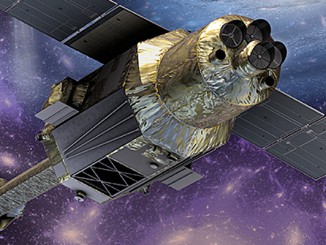
Astronomers studying what they thought was a double star system 1,000 light years from Earth in the southern constellation Telescopium stumbled on what must be a stellar mass black hole, an unseen companion with four times the mass of the Sun that gravitationally shapes the orbit of its nearest companion. It is the nearest known black hole to Earth.
“We were totally surprised when we realised that this is the first stellar system with a black hole that can be seen with the unaided eye,” said Petr Hadrava, emeritus scientist at the Academy of Sciences of the Czech Republic in Prague and co-author of a study in the journal Astronomy & Astrophysics.
The star system, known as HR 6819, was observed as part of a study of binary star systems. Using the FEROS spectrograph with the European Southern Observatory’s MPG/ESO 2.2-metre telescope at the La Silla Observatory in Chile, researchers were surprised to find one of the visible stars, one with at least five times the mass of the sun, was orbiting an unseen body every 40 days. The second visible star is at a larger distance from the inner pair.
Analysing the inner star’s motion, the team concluded it is orbiting a black hole.
“This system contains the nearest black hole to Earth that we know of,” said ESO scientist Thomas Rivinius, who led the study. “An invisible object with a mass at least four times that of the Sun can only be a black hole.”
Only a few dozen stellar-mass black holes have been found in the Milky Way to date. Most of them interact violently with their environment, releasing bursts of detectable X-rays. But quiescent black holes may be a commonplace end state for massive stars across the galaxy’s history.
“There must be hundreds of millions of black holes out there, but we know about only very few,” said Rivinius. “Knowing what to look for should put us in a better position to find them.”



